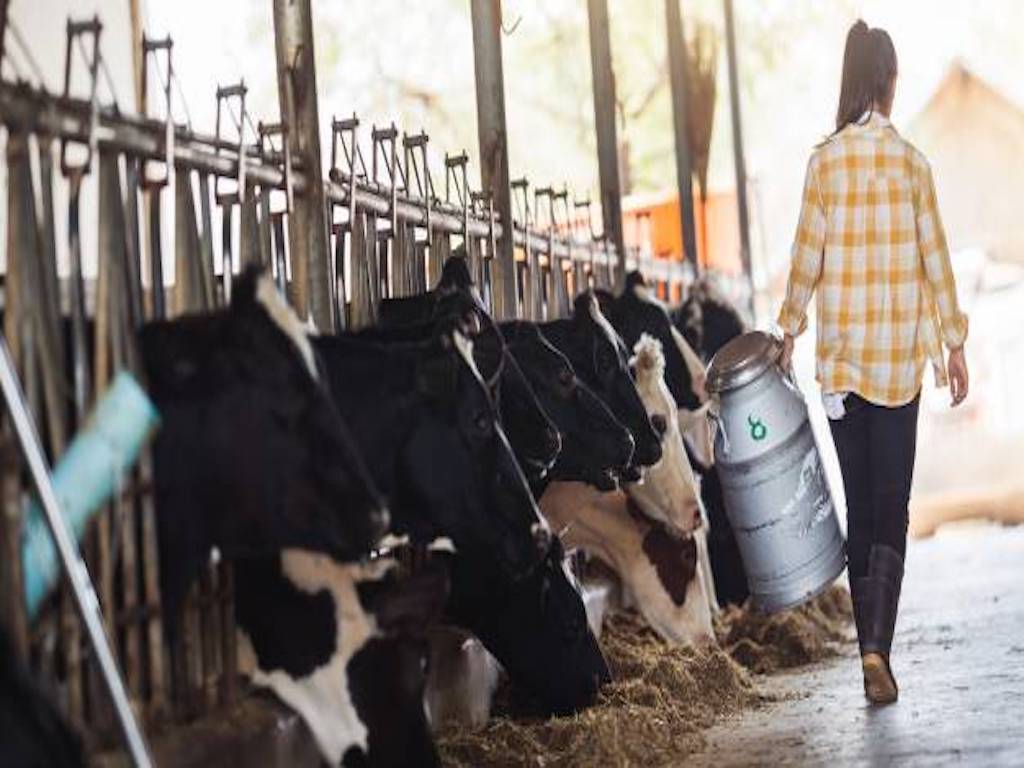
Due to a lack of green fodder for milch cattle, milk output has fallen in Bihar. Cattle farmers have been severely harmed as a result of this year's monsoon that brought excessive rainfall and flood.
Several farmers had to sell their milch animals, according to Sanjay Kumar, deputy director of the Bihar Dairy Development Directorate.
Hundreds of farmers in the flood-affected districts of Supaul, Katihar, Madhubani, Darbhanga, Vaishali, Begusarai, and Samastipur had to sell their livestock due to a lack of green fodder.
"We lost green fodder, a staple diet for milch cattles," said Mahesh Mandal, a cattle farmer from Darbhanga. He also added that farmers re-cultivated it after the water retreated, but it will take a month for it to be ready for harvest.
Farmers utilised available dry fodder in their store and green fodder to feed cattle during early floods following excess rains in mid-June, he noted. Floods wiped away or destroyed everything.
Suraj Yadav of Supaul, another dairy farmer, said the circumstances forced them to sell their cattle in despair or buy high-cost dry feed from the market.
Floods destroyed the majority of fodder and animal feed, killing 43 people and affecting 3 million people in 2,104 villages. Cow's milk production has decreased as a result of being stressed and standing in floods. Cows that once produced 12 litres of milk per day now produce an average of six litres per day.
Mandal and Yadav both stated that rising dry fodder prices had an impact on them. Dry feed cost Rs 500-600 per quintal until early this year, but later climbed to Rs 900-1,000 per quintal.
"The government has failed to support cattle farmers in flood-affected regions by not supplying dry cow feed at subsidised rate," Mandal said, adding that rising fuel prices contributed to the hike in dry fodder prices.
According to authorities of the Bihar State Milk Co-Operative Federation Ltd (COMFED), milk output plummeted 30-40% owing to a lack of green fodder in the state.
The average daily fresh milk procurement for COMFED has decreased from 17-18 lakh litres last year to 8-10 lakh litres this year.
COVID-19 lockdowns affected milk production in 2020. According to COMFED authorities, daily milk procurement was approximately 17 lakh litres in 2020 and more than 18 lakh litres in 2018-19.
To fill the demand-supply discrepancy, COMFED is allegedly buying milk from Maharashtra, Karnataka, and Rajasthan.
Following the timely arrival of the monsoon, Bihar got only 3% excess rainfall through September 30. This is less than previous year, when the state had a 25% rainfall excess from June to September.
From July through August, the state sees a lot of rain. However, Bihar experienced an abundance of rain in June, just before the monsoon came. Flooding occurred in low-lying regions as a result of this.
















